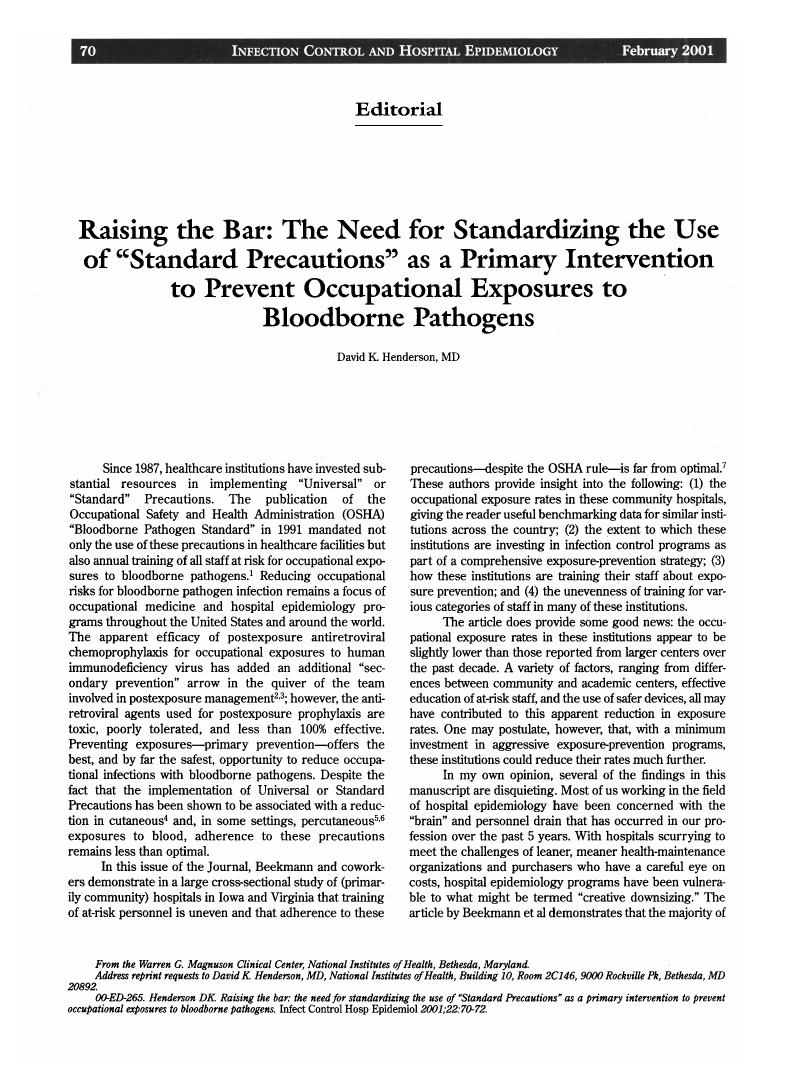Crossref Citations
This article has been cited by the following publications. This list is generated based on data provided by Crossref.
Trim, Joanna C
Adams, Debra
and
Elliott, Professor TSJ
2003.
Healthcare workers' knowledge of inoculation injuries and glove use.
British Journal of Nursing,
Vol. 12,
Issue. 4,
p.
215.
Jesús Hernández Navarrete, María
Campins Martí, Magda
Vanessa Martínez Sánchez, Elena
Ramos Pérez, Francisca
García de Codes Ilario, Aurelia
and
Luis Arribas Llorente, José
2004.
Exposición ocupacional a sangre y material biológico en personal sanitario. Proyecto EPINETAC 1996-2000.
Medicina Clínica,
Vol. 122,
Issue. 3,
p.
81.
Gammon, John
and
Gould, Dinah
2005.
Universal precautions.
Journal of Research in Nursing,
Vol. 10,
Issue. 5,
p.
529.
Taylor, David L.
2006.
Bloodborne pathogen exposure in the OR—What research has taught us and where we need to go.
AORN Journal,
Vol. 83,
Issue. 4,
p.
833.
Umansky, Samuil R
and
Tomei, L David
2006.
Transrenal DNA testing: progress and perspectives.
Expert Review of Molecular Diagnostics,
Vol. 6,
Issue. 2,
p.
153.
Campins, Magda
Torres, Miquel
Varela, Pilar
López Clemente, Victoria
Gascó, Ampar
de la Prada, Miriam
Espuga, Meritxell
Tapias, Gemma
Peña, Pilar
Hermosilla, Eduardo
Otero, Susana
Bastida, Teresa
Sanz, Pilar
María Bayas, José
and
Serra, Consol
2009.
Accidentes biológicos percutáneos en el personal sanitario: análisis de factores de riesgo no prevenibles mediante precauciones estándares.
Medicina Clínica,
Vol. 132,
Issue. 7,
p.
251.
Marziale, Maria Helena
Zapparoli, Amanda dos Santos
Felli, Vanda Elisa
and
Anabuki, Marina Hideko
2010.
Rede de Prevenção de Acidentes de Trabalho: uma estratégia de ensino a distância.
Revista Brasileira de Enfermagem,
Vol. 63,
Issue. 2,
p.
250.
Sangwan, BR
Kotwal, Atul
and
Verma, AK
2011.
Occupational Exposure to Blood and Body Fluids amongst Health Care Workers in a Teaching Hospital of the Armed Forces.
Medical Journal Armed Forces India,
Vol. 67,
Issue. 1,
p.
21.
Pérez Ruiz, Cristina
Torres Salinas, Miquel
de la Red Bellvis, Gloria
Msabri, Nada
Niño Aragón, Esther
and
Sobrino Martínez, Javier
2017.
Incidencia de exposiciones accidentales a sangre y fluidos biológicos en el personal sanitario de un hospital comarcal.
Gaceta Sanitaria,
Vol. 31,
Issue. 6,
p.
505.



